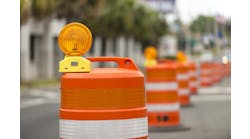Sensors on some Colorado roads are equipped to detect ice, water and temperature to provide the most up-to-the-minute information for road crews, according to Coloradoan.com.
The sensors, installed on I-25, help save money by helping road crews decide when and where and whether to lay down liquid de-icer, and inform the crews whether they need to keep plowing and de-icing during storms.
The sensors were installed last month and are the latest in a network providing Colorado Department of Transportation (CDOT) workers with a comprehensive view of conditions around the state.
Other sensors give wind speed and direction readouts, and save workers from having to drive to remote locations to check on how the weather is affecting roads.
"We have better forecasting, so we can plan better responses," said Phillip Anderle, deputy maintenance superintendent in Region 4, which includes Fort Collins, Loveland, Greeley and Boulder. "The more of these systems we have out there, the more information it's gathering, the better the forecasting is going to be."
He added, "You know how they say a picture is worth a thousand miles? Well, a camera is probably worth 1,000 miles of driving."
Anderle told the Coloradoan.com that the systems are particularly useful during a storm, because workers can better understand how warm the road is compared to the air temperature, whether cooler or warmer air is moving in and how effectively different ice-melters will work.
Some liquid deicers work better than others in colder temperatures, but they are also more expensive. Anderle said the sensors can help indicate whether more deicer is needed, or whether things are already improving enough on their own, potentially conserving CDOT funds.
A complete weather station, which includes the road sensors, an anemometer and a camera, costs about $70,000. Anderle said the systems pay for themselves over time by saving CDOT money on deicier, which can cost up to 76 cents a gallon.
"Really what it's doing is telling us what product, how much and when," he said. "There's definitely a direct cost benefit, and then there's a indirect benefit from having better weather forecasting across the nation."


